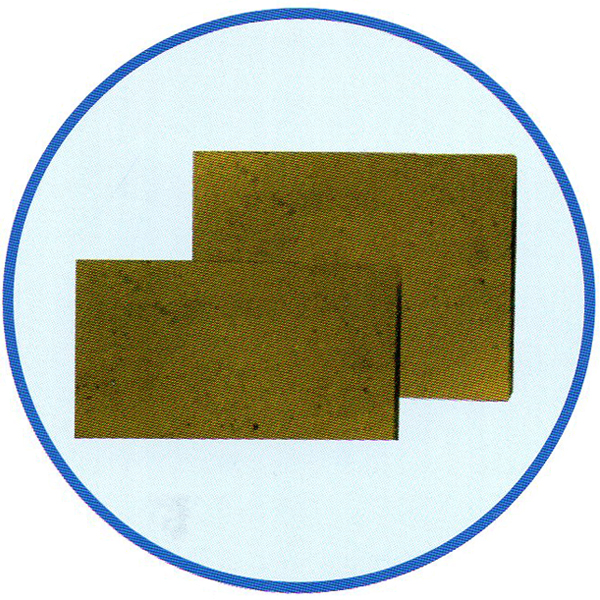Masonry process of blast furnace body. Light burnt powder
1. Preparation work before blast furnace body masonry:
(1) The installation of the shell of the blast furnace is completed and the frame required for masonry is completed.
(2) Tools, equipment, facilities, materials, etc. required for construction are prepared and installed.
(3) The refractory materials required for the blast furnace body (such as various carbon bricks, corundum bricks, iron and tuyere combination bricks in the hearth and hearth) pass the quality inspection, and are transported to the masonry site and stored in an orderly and proper manner.
(4) Before construction, use measuring instruments to measure the center line and horizontal elevation of the blast furnace body, and draw the line to mark it accurately.
(5) Construction operators can only work after passing the construction technology education and safety training.
2. Blast furnace body masonry process flow:
(1) Press carbon glue under the furnace floor:
Clean the inner and outer periphery of the grouting port to prevent clogging during grouting. When the pressure gauge exceeds 0.4MPa or the adjacent grouting hole appears to erupt, stop grouting immediately, plug the grouting hole, and perform construction The next grouting hole shall be constructed in sequence, requiring a smooth and non-stop process to prevent the carbon glue from solidifying and clogging.

(2) Construction of leveling layer of furnace bottom carbon material:
Clean the bottom surface of the furnace, use a wooden scraper to lay down the material surface, tamping along the flat steel strips on both sides with a tamping hammer, and then use a vibrating plate ram to repeatedly vibrate 3 to 4 times until the reduction (ie compression Ratio) ≥45%. Then continue the ramming construction of the next layer until the thickness meets the construction requirements. The elevation of the upper surface should be about 5mm higher than the design height to facilitate leveling. The relative elevation error of the surface measured with a level meter should be less than 5mm.
(3) Filling of cooling stave gap:
The construction of silicon carbide ramming material is to construct the cooling stave gap and the cooling stave steel brick gap. When filling, pay attention to the fullness and compactness of the slurry. The blast furnace shell grouting needs to wait for the completion of the refractory brick masonry before construction.
Note: The initial setting and agglomeration of slurry shall not be repeated construction.
(4) Furnace bottom carbon brick masonry:
Wire the masonry according to the center line of the cross, measure the height and length of the floor, start the masonry from the center line, move the carbon bricks to the specified position, measure the horizontal joints, and lay down the carbon mortar after passing the test, and start to build the carbon bricks. The masonry is carried out from the center to the two ends. For each layer of masonry, attention should be paid to check whether the plane elevation, flatness and thickness of the brick joints of the masonry meet the requirements, and make timely adjustments.
(5) Hearth masonry:
Before masonry, mark the position of the radius line according to the design drawing, and then build the ring-shaped carbon brick according to the bricklaying drawing. After each layer of carbon brick is completed and passed the inspection, the masonry of the ceramic cup is started.
When laying ceramic coasters, attention should be paid to the verticality of the vertical brickwork and the dislocation of adjacent bricks, so as not to affect the masonry quality. In order to facilitate the construction of the bricks used for the furnace bottom masonry, the thickness should be carried out before the masonry. Classification. When masonry, pay attention to the adjustment of the size of the mortar joint. If adjustment cannot be made, use a wooden wedge for temporary fixation, take out the entire ceramic cup after the masonry is completed, and use filler to tamping the mortar joint to compact it. After the furnace bottom carbon brick masonry is completed and the acceptance is passed, mark the center line of the iron hole with the furnace bottom, and then build from the center line to both sides. The bricks of each layer of the hearth ceramic cup wall are constructed flat and staggered.
Before turning the tuyere combination into masonry, the surface of the furnace bottom of the annular zone under the hearth wall should be leveled first, and check whether the angle deviation between the adjacent tuyere large sets meets the design requirements. According to the design bricklaying drawing, build the tuyere first Refractory bricks, and then build the refractory bricks between the two air outlets. After the masonry of the same layer is completed, check the surface flatness of the masonry.
Before masonry, draw the circle line of the hearth based on the determined center line. The surface of the furnace bottom of the annular zone under the hearth wall should be found. Before laying the flat tuyere combination bricks, check the gap between the large sets of adjacent tuyere Whether the included angle deviation meets the design requirements, and the center line of each tuyere is measured on the periphery of the tuyere. When building the combined bricks of the cooling wall openings, first build the bricks at the tuyere according to the number, and then build the bricks of the same layer between the two tuyere After finishing, check the flatness of the brick surface, and use the tuyere to pass the top brick masonry.
Yingkou Dingfeng Metallurgical Technology Co., Ltd.
18041722333
Contact: Mr. Zhang
Telephone: 18041722333
Mail box: 810678900@qq.com
Address: Liangjunzhai Village, Yong'an Town, Dashiqiao City, Yingkou City, Liaoning Province

QR code